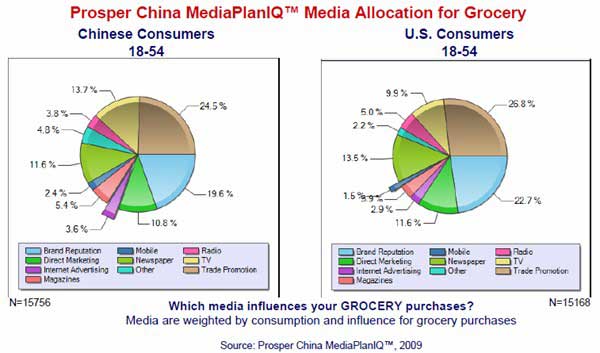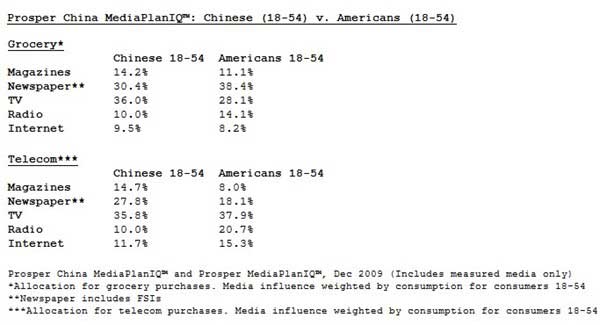The consumption of media among the Chinese––and the influence that media exerts on Chinese purchasing behavior––is significantly different from what it is for American consumers, according to ProsperChina.com and BIGresearch. Chinese consumers are also educated about Western brands and tend to be selective in their purchases.
Influence of Media on Groceries
When buying groceries, 13.7% of Chinese consumers (age 18-54) take their buying cues from newspapers and 10.8% from TV, significantly more than they do from other measured media.* On the other hand, when American consumers make decisions about buying groceries, they rely less on TV (9.9%) and more on newspapers (11.6%).

Influence of Media on Telecom
When making decisions about buying telecom products and services, 17% of Chinese consumers rely on TV and 11.4% rely on newspapers, among measured media alternatives.
Meanwhile, Americans rely less on TV (14.7%) and more on radio (8.0%, compared with 4.7% of Chinese consumers).

Media Allocation for Chinese Consumers
When developing a strategy for marketing groceries to Chinese consumers (age 18-54), planners should allocate 36% of their measured media budgets toward TV and 30.4% toward newspaper, the study recommends. The allocation for marketing groceries to US consumers should include 38.4% toward newspaper and 28.1% for TV.
For telecomm, the allocation model includes 35.8% for TV and 27.8% for newspapers for marketing to Chinese consumers, with more overall emphasis placed on print media for Chinese consumers and more radio for US consumers.

* Measured media includes magazines, newspaper, TV, radio, and Internet.
About the data: Prosper China MediaPlanIQ is a result of analysis of the BIGresearch China Quarterly by Prosper Technologies.



